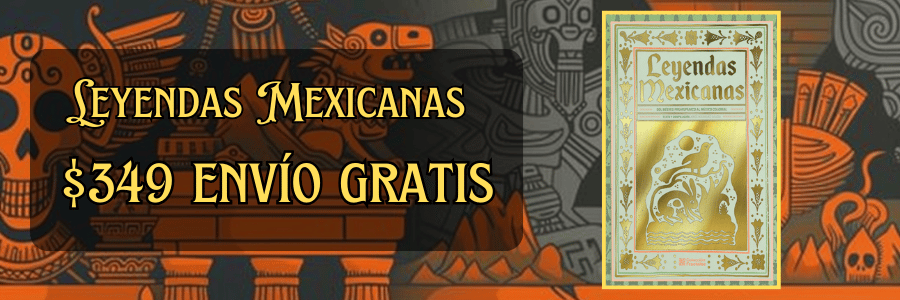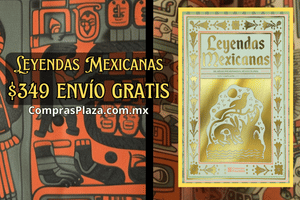The Spanish Conquistadors and the End of the Aztec Empire
The Spanish Conquistadors and the End of the Aztec Empire
The encounter between the Spanish conquistadors and the Aztec Empire marked a watershed moment in the history of the Americas, forever altering the socio-political landscape of New Spain. The story of the Spanish conquest of the Aztecs is one steeped in tales of bravery, cunning, and tragedy, encapsulating the broader themes of imperialism and cultural clash that characterized the Age of Exploration. This historical drama unfolded in the early 16th century and culminated in one of the most remarkable conquests in human history—the fall of one of the most advanced civilizations of its time.
The Aztec Empire, centered in what is now Mexico, was a powerful and complex civilization that emerged in the early 14th century. Its capital, Tenochtitlan, was a grand city built on an island in Lake Texcoco, showcasing impressive architecture, advanced agricultural techniques, and a sophisticated social structure. The Aztecs were warriors and traders, renowned for their rich culture that included intricate pottery, an elaborate calendar system, and, unfortunately, practices such as human sacrifice that played a crucial role in their religious beliefs. By the time Hernán Cortés arrived in 1519, the Aztec Empire had grown to dominate a substantial parts of Mesoamerica, encompassing several million subjects across various ethnic groups. The foundation for the eventual Spanish conquest lay not only in the ambitions of the conquistadors but also in the circumstances surrounding the Aztec Empire's internal dynamics.
Enter Hernán Cortés, a man driven by ambition and dreams of wealth and glory. Born in 1485 in Spain, Cortés began his career in the New World in the early 1500s. After a brief stint in Cuba, he set his sights on the rich Aztec Empire, inspired by reports of its splendor and prosperity. Cortés embarked on his expedition in 1519, armed not just with cannons, swords, and muskets but also the ideologies of European superiority and religious zealotry. The Spaniards were at the height of the Renaissance, fueled by a desire for conquest, gold, and the spread of Christianity—a powerful trifecta that would deeply affect the Indigenous cultures of the Americas.
Upon reaching the Mexican coast, Cortés's first major encounter was with the Totonac people, who had been subjugated by the Aztecs. The Totonacs offered their support to Cortés, viewing the Spaniards as potential liberators from Aztec oppression. This alliance proved crucial, as it provided Cortés not only with additional manpower but also with a burgeoning network of native allies who would aid him in navigating the unfamiliar territory. Cortés also seized the opportunity to exploit the hostilities between various Indigenous groups, a tactic that would play a crucial role in the broader conquest of the Aztecs.
Cortés and his men made their way inland, with a fateful stop at the Aztec capital, Tenochtitlan. As he approached the city, he learned of the Aztec emperor, Montezuma II, and the formidable power he wielded over the Empire. Montezuma, who was both revered and feared, was caught in a web of superstition regarding the arrival of the Spanish. The Aztecs had been anticipating a return of the feathered serpent god, Quetzalcoatl, which coincided with the year Cortés arrived. Believing Cortés and his men to be divine emissaries, Montezuma invited the Spaniards into the capital, providing them with a false sense of security and a strategic foothold to execute their plans.
Upon entering Tenochtitlan, Cortés and his men were struck by the city's splendor and technological advancements. They marveled at the architecture, the bustling marketplaces, and the grandeur of the temples that adorned the cityscape. However, behind this facade were crucial undercurrents of resentment brewing among the various subject tribes of the Aztec Empire, many of whom loathed their Aztec overlords. This existing animosity toward the Aztecs proved to be a game-changer. That resentment would fuel a coalition of Indigenous warriors who would ally with Cortés, aiming to overthrow the Aztec regime.
Despite early appearances, relations between the Aztecs and the Spaniards soon soured. Cortés, driven by lust for gold, began to exert his dominance over the Aztec people. Montezuma, initially hesitant to confront his guests, found himself trapped in a precarious situation. In 1520, tensions exploded as the Aztecs sought to rid themselves of the Spanish presence. Following the event known as "La Noche Triste," the Night of Sorrows, many Spaniards were killed as they attempted to flee Tenochtitlan. Cortés learned a harsh lesson about underestimated the resilience and capability of the Aztec military. This sparked a relentless pursuit of revenge and retribution.
Determined to reclaim his authority, Cortés regrouped, sought reinforcements, and employed a combination of cunning guerilla tactics and military force to wage war against the Aztecs. In a remarkable feat, he returned to Tenochtitlan in 1521, leading a coalition of thousands of Indigenous warriors from rival tribes who had once been oppressed by the Aztec regime. The final siege of Tenochtitlan was a prolonged and brutal affair marked by violent confrontations, the harrowing use of artillery, and the strategic blockade of supplies to the city. Eventually, the Aztec defenses crumbled under the combined pressure of Cortés's forces and their Indigenous allies.
The fall of Tenochtitlan on August 13, 1521, is often regarded as the end of the Aztec Empire and the beginning of Spanish colonial dominance in the region. Montezuma’s death during the Spanish siege compounded the tragedy, emblematic of the collapse of Aztec political power and the disarray within the empire. Cortés symbolically claimed the land for Spain, paving the way for the establishment of New Spain, which would flourish under Spanish rule for centuries. The consequences of the conquest were catastrophic for the Indigenous populace, resulting in drastic demographic decline due to war, enslavement, and the introduction of European diseases to which the Native people had no immunity. Smallpox, influenza, and other illnesses devastated the indigenous population, leading to the death of millions.
The Spanish conquest of the Aztecs was not only a military campaign but a transformative moment for the culture and identity of what would become Mexico. The fusion of Spanish and Indigenous features led to a new, syncretic culture, deeply affecting language, religion, and societal structures for generations to come. Catholicism became a dominant religious force, often merged with Indigenous beliefs in complex and varied ways. The Spanish imposition of their language and legal systems over Indigenous practices fundamentally altered social hierarchies and governance across Mesoamerica.
The story of the Spanish conquistadors and the fall of the Aztec Empire serves as a poignant reminder of the interactions between different cultures, each shaped by its history and values. It invites questions of agency, resistance, and the often-painful legacies of conquest. The fall of Tenochtitlan heralded both an end and a beginning, setting the stage for the complicated narrative of colonization and resistance that would unfold in the Americas for centuries. As we reflect upon this tumultuous historical episode, we bear witness to the profound transformations that reshaped identities and redefined territories, underscoring the resilience of those left to navigate this new world amid the remnants of their past. The echoes of the Spanish conquest continue to resonate, a multifaceted legacy that informs ongoing discussions about culture, identity, and history in contemporary society.
In sum, the fall of the Aztec Empire epitomizes the complex interplay between conquest and culture, a narrative intertwined with ambition, fate, and the human experience at its most tumultuous. With every retelling, the history evolves, yet the lessons it conveys remain vital for understanding the dynamics of power, identity, and resistance that continue to shape our world today. The convergence of the Spanish and Indigenous worlds brought forth a new reality, laden with both profound loss and enduring legacies of survival, adaptation, and cultural evolution that continue to flourish in the social fabric of modern Mexico and beyond.
Explore More:
| The Battle of Celaya: A Turning Point in the Mexican Revolution |
| The Growth of the Renewable Energy Market in Mexico |
| The Influence of Oil on the Politics of the Middle East |
| The Environmental Impacts of the Oil Industry: Challenges and Solutions |
| The Role of Political Factions in Mexico’s Independence War |
| Colonial Mexican Markets: Trade, Goods, and Economy |
| The Role of Disease in Weakening the Aztec Empire |
| The Aftermath of the Mexican Revolution: Social and Economic Changes |
| How Mexico is Supporting Women Entrepreneurs |
| The Role of Intellectuals in Shaping Mexican Policy Post-Revolution |



